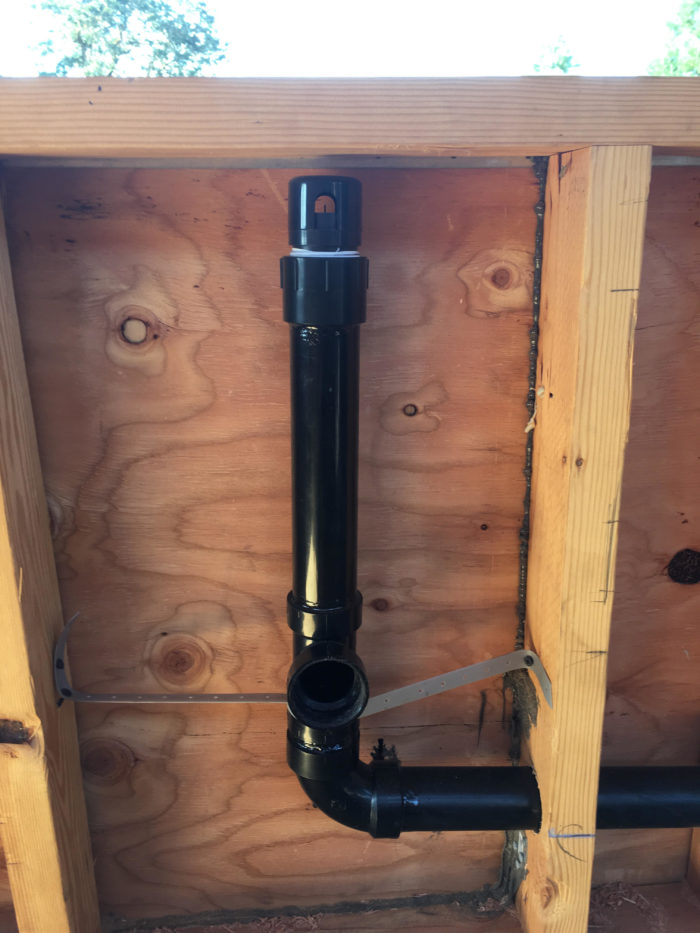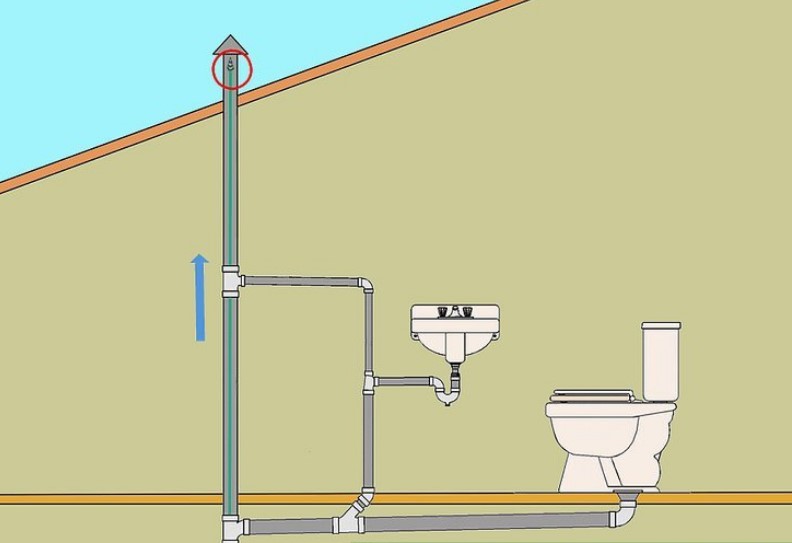Why Proper Ventilation Supports Your Plumbing System
Why Proper Ventilation Supports Your Plumbing System
Blog Article
Were you trying to locate help about The Upsides of Proper Ventilation in Plumbing Design?

Proper air flow in pipes systems is commonly overlooked, yet it is crucial for preserving the functionality and safety and security of your home's plumbing. Air flow aids control air pressure, avoid the accumulation of harmful gases, and ensure the effective removal of waste. In this guide, we will certainly discover the importance of proper plumbing ventilation, exactly how it works, and the benefits it brings to your pipes system.
Comprehending Air Flow in Plumbing
Ventilation in pipes refers to the network of pipelines that permit air to flow with the water drainage system. These vents offer numerous objectives, consisting of managing atmospheric pressure within the pipelines, preventing sewage system gases from getting in the home, and helping in the smooth flow of wastewater.
Just How Ventilation Works in Plumbing Systems
Air Pressure Guideline
Proper ventilation maintains balanced air pressure within the pipes system. When water streams through pipelines, it displaces air. Without adequate ventilation, this displacement can develop unfavorable pressure, causing slow drains or siphoning of water from catches, which can trigger undesirable odors to leak into the home.
Protecting Against Sewage System Gas Accumulation
One of one of the most essential features of plumbing vents is to prevent sewage system gases, such as methane and hydrogen sulfide, from gathering within the home. These gases can position severe wellness risks and are extremely flammable. Vent pipelines permit these gases to run away safely outdoors.
Helping in Waste Removal
Air flow assists in the efficient elimination of wastewater by protecting against airlocks in the drainage system. When air can stream easily through the vents, it enables water and waste to flow efficiently via the pipelines, reducing the threat of clogs and back-ups.
Sorts Of Plumbing Vents
Main Stack Vent
The major pile air vent, additionally known as the air vent pile, is the key air vent in a plumbing system. It expands from the primary drainpipe align through the roofing system, enabling gases to leave and fresh air to get in the system.
Branch Vent
Branch vents link to the major stack air vent and offer individual fixtures, such as sinks, commodes, and showers. These vents guarantee that each fixture has adequate ventilation to work correctly.
Air Admission Valve (AAV).
An Air Admittance Shutoff (AAV) is a one-way shutoff that enables air to get in the plumbing system without the need for a conventional air vent pipeline prolonging through the roof. AAVs are frequently made use of in remodellings or areas where mounting a conventional vent is unwise.
Indications of Poor Ventilation in Plumbing.
Slow Draining Fixtures.
If your sinks, bathtubs, or bathrooms are draining pipes slowly, it could be an indicator of poor ventilation. Poor air flow can develop a vacuum cleaner impact, making it challenging for water to drain appropriately.
Gurgling Seems.
Gurgling audios coming from drains are often an outcome of air being drawn via water traps due to negative stress in the pipes. This is a clear sign of insufficient ventilation.
Undesirable Smells.
Drain smells inside your home are a red flag that your plumbing system is not appropriately ventilated. This can imply that drain gases are not being appropriately aired vent outside, leading to potentially unsafe problems.
Common Air Flow Mistakes.
Poor Vent Sizing.
Using undersized vent pipes can bring about poor air flow and pressure imbalances in the system. It's important to make use of vents that satisfy the certain requirements of your pipes system.
Improper Vent Positioning.
Putting vents as well much from the components they offer can reduce their effectiveness. Proper placement guarantees that air can stream openly and successfully with the system.
Disregarding Code Requirements.
Building regulations offer specific standards for pipes ventilation. Neglecting these codes can result in a system that falls short to work correctly and may cause costly repair services or carcinogen.
Benefits of Correct Ventilation.
Improved System Effectiveness.
Properly ventilated plumbing systems operate more successfully, with fewer clogs, faster draining, and less pressure on the pipes. This effectiveness extends the life expectancy of the pipes system.
Improved Air Top Quality.
By avoiding sewer gases from entering your home, proper air flow adds to much better interior air high quality, making your living setting healthier and more comfy.
Avoiding Water Damages.
Ample ventilation assists stop water from being siphoned out of traps, which can bring about drain gases entering the home and creating water damages in time.
Steps to Ensure Appropriate Ventilation.
Consulting Pipes Codes.
Constantly seek advice from local plumbing codes when designing or changing your plumbing system. These codes provide the necessary guidelines for proper airing vent and ensure your system fulfills security requirements.
Routine Inspection and Maintenance.
Routine assessments can help recognize possible ventilation concerns before they come to be significant problems. Maintenance jobs, such as cleansing air vent pipelines and looking for blockages, are important for maintaining the system in good working order.
Specialist Installation.
For brand-new installments or significant modifications, it's important to employ an expert plumbing. They have the know-how to ensure the air flow system is properly made and installed according to code.
Final thought.
Appropriate ventilation is an important element of any type of pipes system, making sure that it functions effectively and safely. By comprehending the importance of ventilation, acknowledging the indications of inadequate ventilation, and taking steps to preserve your system, you can protect against expensive problems and safeguard your home's air high quality.
What is a Plumbing Vent and it's used for?All plumbing systems in residential and commercials construction have a plumbing vent. It doesn’t just vent unwanted odors from the drainage system to the outside; it actually serves an important purpose by supplying air to the system.
The plumbing drainage system is actually called a drainage, waste and vent (DWV) system. When water flows down the piping, an air supply (vent) is needed to allow the water to flow. Think of the vertical pipe as a drinking straw. If you plug the top end of a straw, liquid won’t drain from it.
The DWV system in your building consists of a series of pipes connected to each fixture; they extend above each fixture, and the system terminates at an open pipe that extends through the roof. This piping allows air into the system and prevents unbalanced pressures in the piping.
?The vent also prevents the system from drawing water out of a trap at the fixture with the characteristic “glug-glug-glug” as the drain gasps for air. Plumbing traps should drain smoothly and never “glug” or gasp for air.
If you have a drain that empties slowly or gurgles as it drains, this may indicate a venting problem. If you flush a toilet and the sink gurgles, there’s definitely a vent problem. It is good idea to have a Plumber check this.
https://www.ameliashomeinspection.com/blog/what-is-a-plumbing-vent-and-its-used-for

I was shown that editorial on What Is a Plumbing Vent and Why Is It Important from an acquaintance on another website. For those who liked our article plz consider to pass it around. Thanks a bunch for being here. Revisit us soon.
Call Today Report this page